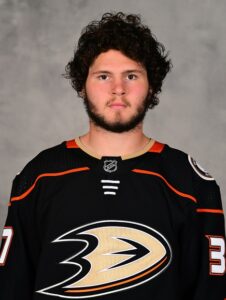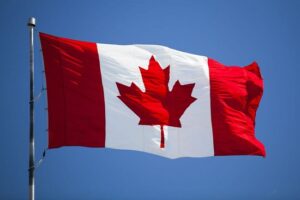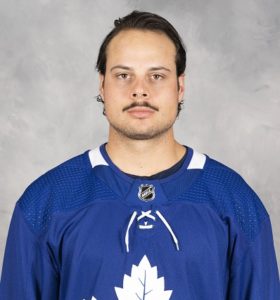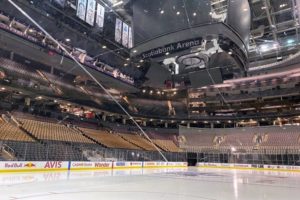Remembering the 1972 Summit Series
Remembering the 1972 Summit Series
I’ve been a hockey fan since 1970. Over the past 52 years, I’ve seen many great, memorable Stanley Cup playoff series and international tournaments.
As a Montreal Canadiens fan, I’ve watched my club reach the Stanley Cup Final 10 times and win hockey’s holy grail eight times. I have also enjoyed exciting series’ involving other teams.
Being a Canadian, I’ve been thrilled by our men’s and women’s teams’ success on the international stage.
Of all my wonderful hockey moments as a fan, nothing compares to the 1972 Summit Series between Canada and the Soviet Union.
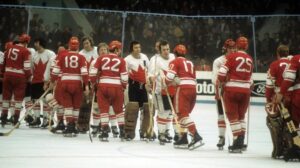
1972 Summit Series (NHL.com).
To this day, the emotions I felt back then as a nine-year-old hockey fan in Nova Scotia still resonate with me 50 years later.
Plenty of ink has been spilled and miles of videotape used to evoke how that series changed the game, how it made the NHL a better league by opening it up to the world, moving it toward today’s fast-paced, highly-skilled product played by its well-trained athletes.
Those changes are very apparent when comparing today’s game with the videos of the Summit Series. The play back then isn’t really all that great, the skills seem at times rudimentary, the pace sometimes plodding. We occasionally see some great passing, skating, scoring and saves.
For fans used to today’s style of play, who have no memory of the Summit Series, it can seem a rather boring affair with occasional bursts of excitement.
To those of us who lived through that series, however, that was hockey as played by the world’s best. It was what we were used to.
What makes the memories of that series so strong for me was the uniqueness of that series and of the time and circumstances under which it occurred.
As has been well-documented, this was the first time Canada’s top professionals were taking on the Soviets’ best. While Canadians laid claim to hockey as “our game,” we hadn’t won at the amateur level in international play for two decades by that point. The Soviets had dominated at the World Championships and the Olympics.
Canadian professionals were barred from participating in those tournaments. So we as a nation of hockey fans dismissed the Soviets’ accomplishments. Sure, they could beat our best amateurs, but they’d never faced our professionals.
We were so certain the NHL stars (who were all Canadian back then) would mop the floor with the Soviets that we were smug about our chances when this series was announced.
I knew about the series thanks to the sports section in our newspapers and the supper hour news. No 24-hour sports channels or internet coverage back then. Being a kid, I only knew a little about the geopolitics of the time. The Soviet Union were the bad guys and we Canadians were the good guys because they didn’t believe in freedom and we did, or at least that was the simplest narrative the adults in my life used to explain it to me.
Because of the Cold War and the so-called “Iron Curtain”, the Soviet players were a mystery to us. We certainly knew every member of Team Canada’s roster.
I was thrilled that my hero, Ken Dryden, was part of the team as well as his fellow Canadiens such as Yvan Cournoyer, Frank and Pete Mahovlich, Serge Savard and Guy Lapointe. I knew very well who Phil and Tony Esposito were, as well as Jean Ratelle and Rod Gilbert. Paul Henderson and Ron Ellis weren’t big stars but I knew them because they played for my second-favorite team at the time, the Toronto Maple Leafs.
I was disappointed that Bobby Orr’s knee would keep him from this tournament and that Bobby Hull wasn’t selected because he’d jumped to the rival World Hockey Association earlier that year. Nevertheless, we all knew that it wouldn’t matter because the Canadians had enough stars to win this series eight straight.
Of course, it didn’t happen like that at all. The Canadians had a 1-2-1 record after the first four games on home ice. I was as stunned and upset by the outcome as everyone else I knew. We couldn’t believe how our best players were being outclassed by the Soviets. It didn’t look good heading over to Moscow for the final four games.
And yet, somewhere along the way, we didn’t give up on “our boys”. Even when they fell 5-4 in Game 5 and were on the brink of losing the series, me and everyone I knew felt they could pull it off. Win Game 6, and they could tie the series in Game 7. Win that one, and it’s winner-take-all in Game 8.
Given my age, my parents only allowed me to watch the first two periods of the games in Canada. Games 5, 7 and 8 were on school days so I got to see the third period when I came home and then saw the first two periods during the rebroadcast that evening.
The critical Game 6 was on a Sunday and it was the only one I got to see aired in its entirety in real time because it was broadcast in the afternoon in Nova Scotia.
That game, the one broadcaster Foster Hewitt called “do or die” was the most nerve-wracking for me. Dryden, my hero, had not played well in his two games in Canada. I remember my dad complaining before the game that they should’ve started Tony Esposito. If they lost this one, the Soviets would take the series and the final two games would be meaningless.
My entire family watched that game that afternoon. That was unusual because my father was a die-hard baseball and CFL football fan who only had a mild interest in hockey. The only sport my mother enjoys is curling. My sister never had any interest in sports at all. And yet, there we were, riveted to the action beaming on our black and white TV from an arena with a strange name in Moscow.
This series by that point had become something more than hockey. It became more about our national identity. Canadians had a huge inferiority complex back then when it came to comparing ourselves to other countries, which is probably inevitable given our superpower neighbor to the south. However, the one thing we knew for certain was that we were the best at hockey.
And now, it appeared we were on the verge of losing that. Phil Esposito would later describe the series as more than a hockey tournament but something that evolved into a clash of cultures and nations. “It was our society against their society,” he said.
Those who have no memories of the Cold War cannot understand what that felt like. We had been told the Soviets were bent on conquering and enslaving the world with communism. They were the bad guys and our country, along with the other NATO nations, were the good guys.
To lose to the Soviets was unthinkable. It just couldn’t happen. And yet, it seemed like it was going to happen.
That’s what makes the Summit Series so memorable for those of us who lived through that time and watched that series. What was simply supposed to be a friendly tournament between the two best hockey-playing nations in the world became, for Canadians, part of the act of the Cold War playing out on the ice.
Games 6, 7 and 8 stand out for me and I think most Canadians who watched that series. Team Canada battled back to win all three by one-goal margins with Henderson scoring the winning goals in each contest. Dryden was rock-solid in Game 6 and prevailed in Game 8 despite giving up five goals in two periods.
Henderson’s winner in Game 8 remains the greatest goal I’ve ever seen. Not because it was done in a particularly skillful manner. Henderson picked up a rebound in front of the Russian net, took two whacks at it and managed to tuck it under Vladislav Tretiak for the winner.
It was the drama of the thing. The Canadians were down 5-3 entering the third period. Phil Esposito cut the Soviet lead to 5-4. Cournoyer tied it midway through the period.
I missed Esposito’s goal because that was a school day. Unlike other schools in Canada, our principal didn’t allow us to watch the game, though he was kind enough to update the score over the PA system as the game progressed.
It was 5-4 when I got home. My mother had the game on TV in the living room and was listening to it while she was working in the kitchen. She was skipping her soap operas (which she called “my stories”) to keep track of a hockey game.
I was able to see the drama of the remainder of that period. Henderson’s goal was so unexpected, the result of a broken play after he had fallen behind the net, with Hewitt’s practically screaming, “They Score! Hen-der-son! Has Scored For Canada!”
At that moment, I leaped from my chair and howled with delight. My mother ran in from the kitchen to see the replay. We both stood there in our living room watching the rest of the period play out.
The good guys had won. Canada was still the best.
What followed was a tremendous sense of joy, then relief, and underneath it all, the knowledge that hockey was never going to be the same after this.
Over the course of that series, I and millions of Canadian grew to admire and respect the Soviet stars.
Vladislav Tretiak was a terrific goaltender, especially in the first four games in Canada. Valeri Kharlamov was a dazzling, creative forward. Alexander Yakushev played a style similar to the high-scoring Phil Esposito. Boris Mikhailov was a physical, agitating forward who could match up well against any of his opponents.
After that, we knew our country could never take our supposed domination over the game of hockey for granted ever again.
There would be future international tournaments involving Canada’s best professionals with all the focus being on how they measured up against the Soviets. There would be dominating series wins on both sides as well as closely-fought ones. The 1987 Canada Cup best-of-three final was perhaps the best-played of the lot. Many of the best Soviet players from that series – Igor Larionov, Vyacheslav Fetisov, Sergei Makarov, Igor Kravchuk, Valeri Kamensky, Sergei Nemchinov – would go on to NHL careers.
Meanwhile, other countries were improving and challenging Canada and the Soviets. A trickle of European talent to the NHL in the 1970s became a flood in the 1990s with the end of the Cold War and the collapse of the Soviet Union. More American players, some inspired by “The Miracle on Ice” in 1980 or the 1996 World Cup of Hockey, joined their ranks.
Canadian players today still make up the majority in the NHL but only just. The top talent consists of players from a number of hockey-playing nations and the game is better because of it.
There will never be another international tournament like the ground-breaking 1972 Summit Series. It has shaped hockey over the past 50 years and its echoes are still being felt today. The experience of watching it unfold during that distant September and feeling all the emotions that came with it will stay with me for the rest of my life.

